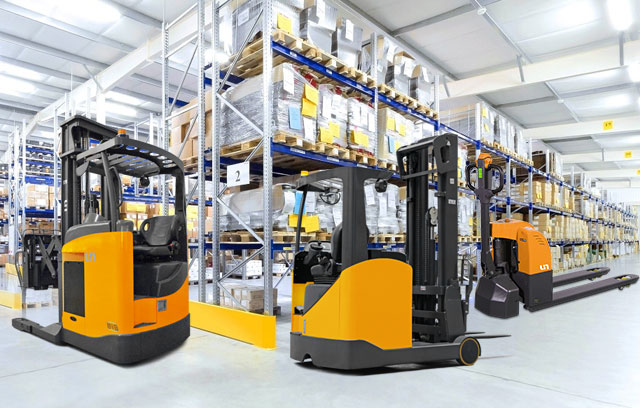The Multi-Directional Forklift is an innovative forklift in modern material handling equipment that can move and operate efficiently in a small space. Its moving mechanism makes it very different from traditional forklifts, and it can move freely in multiple directions, which improves the flexibility and efficiency of operation. This article will explore the moving mechanism of a multi-directional forklift in depth, including its core components, operating principles and application advantages.
1. Core components
The moving mechanism of a multi-directional forklift mainly relies on the following core components:
Omnidirectional wheels: Omnidirectional wheels are the key components of a multi-directional forklift, allowing the forklift to move in any direction. This type of wheel is usually composed of multiple small wheels that can rotate freely in different directions, providing extremely high maneuverability.
Drive system: Multi-directional forklifts can be driven by electric drive or internal combustion engine. Electric drive systems are generally quieter, environmentally friendly, and suitable for indoor use, while internal combustion engines are suitable for outdoor environments and can provide greater power.
Control system: Modern multi-directional forklifts are equipped with advanced electronic control systems, and operators can control the movement of the forklift through joysticks or touch screens. This system can monitor the position and speed of the forklift in real time to ensure the accuracy and safety of the operation.
2. Working principle of omnidirectional wheels
Omnidirectional wheels are the key to multi-directional forklifts' ability to move in multiple directions. Its working principle is as follows:
Structural design: The omnidirectional wheel consists of a main wheel and multiple small wheels, which are installed along the outer ring of the main wheel. These small wheels can rotate freely in the horizontal plane, allowing the forklift to slide in different directions.
Movement mode: The operator can select the direction of movement of the forklift through the control system. For example, the forklift can move forward, backward or sideways without changing the direction of the body. The rotation of the small wheels makes this multi-directional movement possible, greatly improving the flexibility in a small space.
Oblique movement: The design of the omnidirectional wheel also enables the forklift to move diagonally. The operator only needs to adjust the angle of the control lever, and the forklift can move to a specific diagonal position, which is particularly convenient when handling goods.
3. The role of the drive system
The drive system of a multi-directional forklift is crucial to its movement mechanism.
Electric drive: Electric multi-directional forklifts are battery-powered and can provide continuous and smooth power. The advantages of electric drive are its low noise and low emissions, and it is suitable for use indoors and in crowded environments.
Internal combustion engine drive: Multi-directional forklifts driven by internal combustion engines are usually used for outdoor operations and can provide stronger power and longer working time. They are suitable for use in environments with bad weather or complex terrain.
4. The role of the control system
The control system is the "nerve center" of the multi-directional forklift, ensuring that the forklift can move flexibly according to the operator's instructions.
Real-time monitoring: Modern multi-directional forklifts are equipped with sensors that can monitor the position, speed and load of the forklift in real time. This data is fed back to the operator through the control system to ensure that he can respond in time.
Precise control: The operator inputs instructions through the joystick or touch screen to control the direction and speed of the forklift. The system will convert the instructions into precise actions to ensure that the forklift can complete the handling task quickly and safely.











 中文简体
中文简体 عربى
عربى Español
Español














